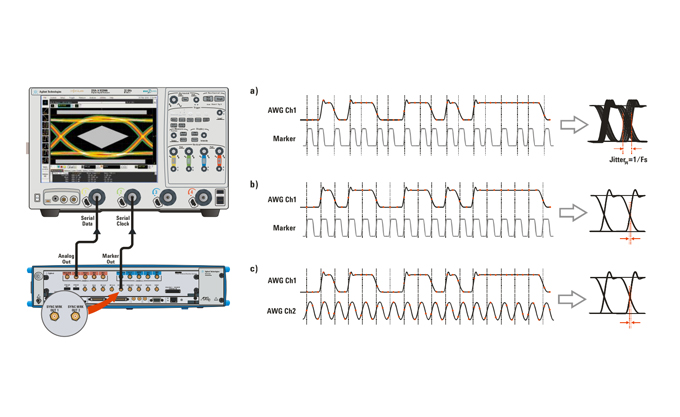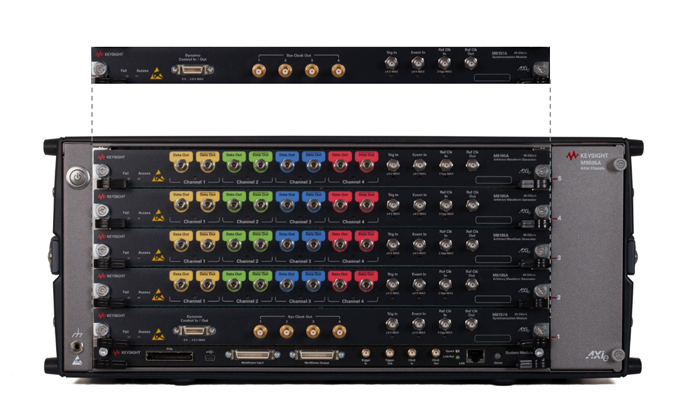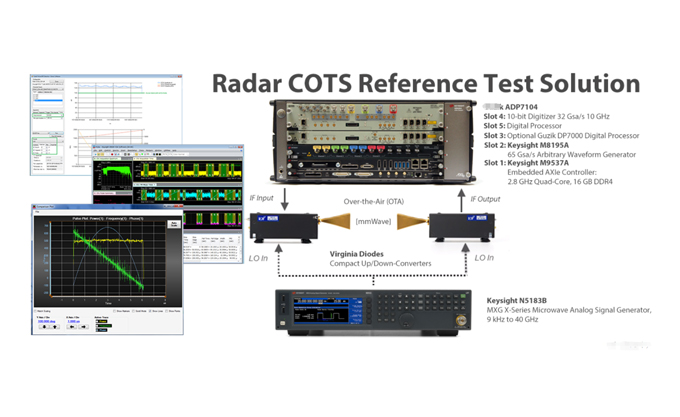Keysight M8195A 65GSa/s Arbitrary Waveform Generator: A Benchmark Solution for High-Precision Signal Generation Technology
2025-07-31
View:2474
Keysight M8195A 65GSa/s Arbitrary Waveform Generator: A Benchmark Solution for High-Precision Signal Generation Technology

In the fields of microwave radio frequency, high-speed digital communication, and cutting-edge scientific research, the precision and bandwidth of signal generation directly determine the upper limit of test systems. As a new generation of 65GSa/s arbitrary waveform generators, Keysight M8195A has established an industry-leading performance benchmark with its core parameter combination of 25GHz analog bandwidth, 14-bit vertical resolution, and 8GB waveform storage depth per channel. From 5G millimeter-wave base station calibration to terahertz imaging system research and development, this device is providing irreplaceable technical support for high-end test scenarios through refined parameter control and modular architecture.
The Golden Ratio of Sampling Rate and Resolution
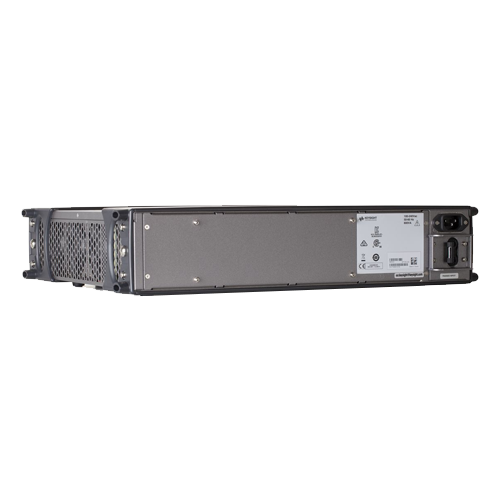
The real-time sampling rate of 65GSa/s is not a simple accumulation of parameters. Behind it is the technological breakthrough of the 1:4 oversampling architecture - within the 25GHz bandwidth, 4 sampling points can be accurately captured per analog cycle. This means that for a 10GHz sine signal, a phase measurement accuracy of 0.01° can still be maintained. Combined with 14-bit vertical resolution (equivalent to 0.006% amplitude quantization error), the M8195A can generate complex modulated signals with a dynamic range of 70dBc. Even for 64QAM, a modulation method sensitive to amplitude accuracy, the EVM (Error Vector Magnitude) can be controlled below -45dB.
In the testing of 6G candidate frequency bands, the device can directly generate 3200MHz bandwidth NR waveforms, supporting 256QAM and higher-order modulation formats. Its ±1ppm time base stability ensures that the frequency drift during long-term testing is less than 0.01Hz, providing a "zero-error" benchmark for communication protocol verification.
Scalability Advantages of Modular Architecture
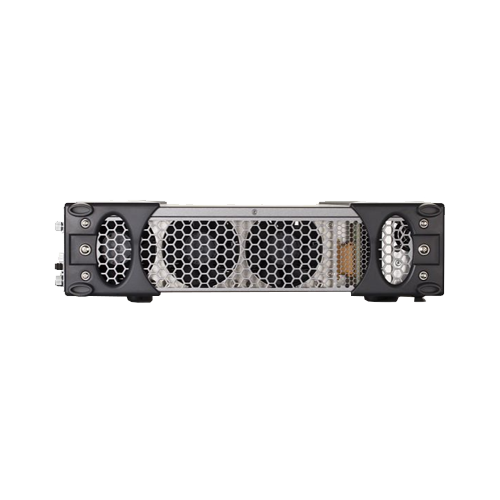
The M8195A adopts a PXIe 10-slot modular design, with a single module integrating 4-channel synchronous output. Through the M8197A synchronization module, sub-picosecond channel synchronization between 4 modules can be achieved (inter-channel phase difference<50fs). This architecture shows unique value in multi-port radar system testing: with 16-channel parallel output, each channel can independently generate frequency-agile linear frequency-modulated signals, and the Pulse Repetition Frequency (PRF) supports continuous adjustment from 1kHz to 1MHz, with a minimum pulse width of 10ns.
In terms of storage depth, the 8GB waveform memory per channel can accommodate 2 seconds of continuous waveforms at 65GSa/s. Combined with segmented storage technology, it can realize seamless switching of 1000 waveform segments with a switching time of<10ns. This feature is particularly crucial in electronic warfare scenarios, as it can simulate 100,000 frequency switches per second in frequency-hopping communication without spurious signals during switching.
Underlying Technology of Calibration and Distortion Compensation
To eliminate system errors, the M8195A has a built-in real-time frequency response calibration engine, which performs real-time compensation for cable loss, connector reflection, etc., through a 2048-point dynamic equalization filter. Within the 25GHz frequency band, the amplitude flatness can be corrected to ±0.5dB, and the phase linearity can be optimized to ±2°. Its DC drift compensation function can control the inter-channel offset within 5mV, ensuring amplitude consistency in multi-channel testing.
For high-speed digital signal generation, the device supports pre-emphasis and de-emphasis adjustment. In 100G Ethernet PAM4 signal testing, 8th-order nonlinear equalization can be used to compensate for the bandwidth limitation of the transmission link, increasing the eye diagram opening by more than 30%. Combined with the built-in jitter injection module (adjustable from 0.1ps to 100ps), it can accurately simulate timing errors in actual links, providing a comprehensive stress test solution for SerDes chip verification.
Industry-Customized Application Scenarios
In the field of semiconductor testing, the low-noise output (-150dBc/Hz@10kHz offset) of the M8195A makes it an ideal source of local oscillator signals for radio frequency chips. Combined with a pulse modulator (minimum pulse width 5ns), it can realize pulse compression testing of radar transceiver chips. In quantum computing research, its sub-nanosecond trigger response (trigger delay jitter<10ps) can accurately synchronize laser pulses with quantum bit control signals.
The PathWave waveform generation software provided by Keysight supports standard waveform libraries such as 3GPP and IEEE 802.11, and has a built-in MATLAB interface, facilitating users to customize special waveforms generated by complex algorithms. Through LXI Class C remote control, distributed synchronization of multiple devices can be realized, building a global test system covering from DC to millimeter waves.
From parameter indicators to practical applications, every performance of the M8195A has been verified in harsh scenarios. Its reliability with MTBF (Mean Time Between Failures) of 10,000 hours, combined with the 4-hour response technical support provided by Keysight's global service network, provides full-life-cycle protection for high-end test scenarios. For R&D teams pursuing extreme test accuracy, this device is not only a tool but also a strategic asset for breaking through technical barriers.
Keysight M8195A 65GSa/s Arbitrary Waveform Generator: A Benchmark Solution for High-Precision Signal Generation Technology
2025-07-31
Keysight M8195A 65GSa/s Arbitrary Waveform Generator: A Benchmark Solution for High-Precision Signal Generation Technology

In the fields of microwave radio frequency, high-speed digital communication, and cutting-edge scientific research, the precision and bandwidth of signal generation directly determine the upper limit of test systems. As a new generation of 65GSa/s arbitrary waveform generators, Keysight M8195A has established an industry-leading performance benchmark with its core parameter combination of 25GHz analog bandwidth, 14-bit vertical resolution, and 8GB waveform storage depth per channel. From 5G millimeter-wave base station calibration to terahertz imaging system research and development, this device is providing irreplaceable technical support for high-end test scenarios through refined parameter control and modular architecture.
The Golden Ratio of Sampling Rate and Resolution

The real-time sampling rate of 65GSa/s is not a simple accumulation of parameters. Behind it is the technological breakthrough of the 1:4 oversampling architecture - within the 25GHz bandwidth, 4 sampling points can be accurately captured per analog cycle. This means that for a 10GHz sine signal, a phase measurement accuracy of 0.01° can still be maintained. Combined with 14-bit vertical resolution (equivalent to 0.006% amplitude quantization error), the M8195A can generate complex modulated signals with a dynamic range of 70dBc. Even for 64QAM, a modulation method sensitive to amplitude accuracy, the EVM (Error Vector Magnitude) can be controlled below -45dB.
In the testing of 6G candidate frequency bands, the device can directly generate 3200MHz bandwidth NR waveforms, supporting 256QAM and higher-order modulation formats. Its ±1ppm time base stability ensures that the frequency drift during long-term testing is less than 0.01Hz, providing a "zero-error" benchmark for communication protocol verification.
Scalability Advantages of Modular Architecture

The M8195A adopts a PXIe 10-slot modular design, with a single module integrating 4-channel synchronous output. Through the M8197A synchronization module, sub-picosecond channel synchronization between 4 modules can be achieved (inter-channel phase difference<50fs). This architecture shows unique value in multi-port radar system testing: with 16-channel parallel output, each channel can independently generate frequency-agile linear frequency-modulated signals, and the Pulse Repetition Frequency (PRF) supports continuous adjustment from 1kHz to 1MHz, with a minimum pulse width of 10ns.
In terms of storage depth, the 8GB waveform memory per channel can accommodate 2 seconds of continuous waveforms at 65GSa/s. Combined with segmented storage technology, it can realize seamless switching of 1000 waveform segments with a switching time of<10ns. This feature is particularly crucial in electronic warfare scenarios, as it can simulate 100,000 frequency switches per second in frequency-hopping communication without spurious signals during switching.
Underlying Technology of Calibration and Distortion Compensation
To eliminate system errors, the M8195A has a built-in real-time frequency response calibration engine, which performs real-time compensation for cable loss, connector reflection, etc., through a 2048-point dynamic equalization filter. Within the 25GHz frequency band, the amplitude flatness can be corrected to ±0.5dB, and the phase linearity can be optimized to ±2°. Its DC drift compensation function can control the inter-channel offset within 5mV, ensuring amplitude consistency in multi-channel testing.
For high-speed digital signal generation, the device supports pre-emphasis and de-emphasis adjustment. In 100G Ethernet PAM4 signal testing, 8th-order nonlinear equalization can be used to compensate for the bandwidth limitation of the transmission link, increasing the eye diagram opening by more than 30%. Combined with the built-in jitter injection module (adjustable from 0.1ps to 100ps), it can accurately simulate timing errors in actual links, providing a comprehensive stress test solution for SerDes chip verification.
Industry-Customized Application Scenarios
In the field of semiconductor testing, the low-noise output (-150dBc/Hz@10kHz offset) of the M8195A makes it an ideal source of local oscillator signals for radio frequency chips. Combined with a pulse modulator (minimum pulse width 5ns), it can realize pulse compression testing of radar transceiver chips. In quantum computing research, its sub-nanosecond trigger response (trigger delay jitter<10ps) can accurately synchronize laser pulses with quantum bit control signals.
The PathWave waveform generation software provided by Keysight supports standard waveform libraries such as 3GPP and IEEE 802.11, and has a built-in MATLAB interface, facilitating users to customize special waveforms generated by complex algorithms. Through LXI Class C remote control, distributed synchronization of multiple devices can be realized, building a global test system covering from DC to millimeter waves.
From parameter indicators to practical applications, every performance of the M8195A has been verified in harsh scenarios. Its reliability with MTBF (Mean Time Between Failures) of 10,000 hours, combined with the 4-hour response technical support provided by Keysight's global service network, provides full-life-cycle protection for high-end test scenarios. For R&D teams pursuing extreme test accuracy, this device is not only a tool but also a strategic asset for breaking through technical barriers.
related news












